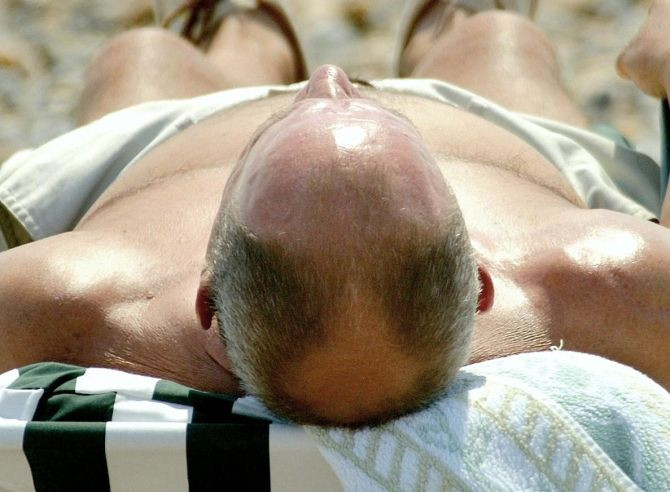Aging Face and Thinning Hair May Signal Impending Heart Attack

An aging face may predict an aging heart, new research suggests.
A new study revealed that baldness, earlobe crease or yellow fatty deposits around the eyelids, and other signs of aging could predict the risk of heart disease, leading researchers to suggest that if you look old, your heart may also feel old.
Danish researchers presenting at the American Heart Association's Scientific Sessions in Los Angeles found that people who have three to four aging sings like receding hairline, baldness, earlobe crease or yellow fatty deposits around the eyelid have a 57 percent high risk of heart attack and a 39 percent increased risk of heart disease.
Researchers also found that xanthelasmata, deposits of cholesterol under the skin, usually found on or around the eyelids, is the strongest individual predictor for both heart attacks and heart disease.
"The visible signs of aging reflect physiologic or biological age, not chronological age, and are independent of chronological age," the study's senior author Professor Anne Tybjaerg-Hansen of the University of Copenhagen said in a statement.
Tybjaerg-Hansen and her team analyzed 10,885 people over the age of 40. Of all the participants, 7,537 had frontoparietal baldness, which is receding hairline at the temples, 3.938 had crown top baldness, 3,405 had earlobe creases, and 678 had fatty deposits around the eye.
Researchers found that in the 35 years of follow-up, 3,401 participants developed heart disease and 1,708 had a heart attack.
Results of the study showed that individually and combined, the aging signs significantly predicted heart attack and heart disease independent of traditional risk factors.
The team also found that heart attack and heart disease risk increased with each additional sign of aging in all age groups, with the highest risk for those in their 70s and those with multiple signs of aging.
Researchers also noted that the quantity of gray hair, prominence of wrinkles, the type and extent of baldness, the presence of earlobe crease and eyelid deposits predict the risk of future heart problems.
"Checking these visible aging signs should be a routine part of every doctor's physical examination," Tybjaerg-Hansen said.
The study confirms past research that found that hair loss in men, especially baldness on the crown of the head, could indicate heart problems.
Harvard Medical School researchers writing in the Archives of Internal Medicine, found that men with severe vertex baldness, balding at the crown of the head, were 36 percent more likely to suffer heart disease, but men with frontal baldness had just a 9 percent increased risk.
In the past, researchers suggested that high testosterone, which is associated with baldness, might also be linked to heart problems.
Scientists from the University of California found that the higher a man's level of natural testosterone, the higher his risk of heart problems.
Researchers have also suggested that a lack of blood supply to the hair follicles, which causes them to die off, may be related to poor blood circulation.
A study published in the British Heart Journal found that earlobe creases were often associated to deaths caused by cardiovascular problems, leading researchers to suspect that the creases occur as a result of deformed blood vessels, which may also be true of vessels supplying blood to the heart.
Published by Medicaldaily.com



























